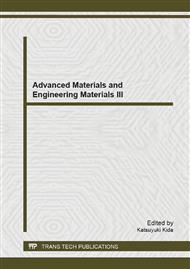p.387
p.392
p.397
p.402
p.406
p.410
p.415
p.419
p.424
Effect of Tempering Temperature on Mechanical Properties and Microstructures of 800MPa Microalloy Low Carbon Bainitic Steel
Abstract:
The effect of tempering temperature on the microstructures and mechanical properties of a microalloy low carbon bainitic steel was investigated by microscopic analysis and testing of mechanical properties. The results show that the microstructures of the tested steel primarily consists of lath bainite, granular bainite, quasipolygonal ferrite and little acicular ferrite at different tempering temperatures. With the tempering temperature increasing, the proportion of lath bainitie decreases, while the volume of granular bainite and quasipolygonal ferrite increases. At the tempering temperatures of 550-650°C and tempering time of 1 hour, the steel was mostly composed of granular bainite, quasipolygonal ferrite and a little lath bainite, which a good combination of strength and toughness can be obtained.
Info:
Periodical:
Pages:
406-409
Citation:
Online since:
February 2014
Authors:
Price:
Сopyright:
© 2014 Trans Tech Publications Ltd. All Rights Reserved
Share:
Citation:


